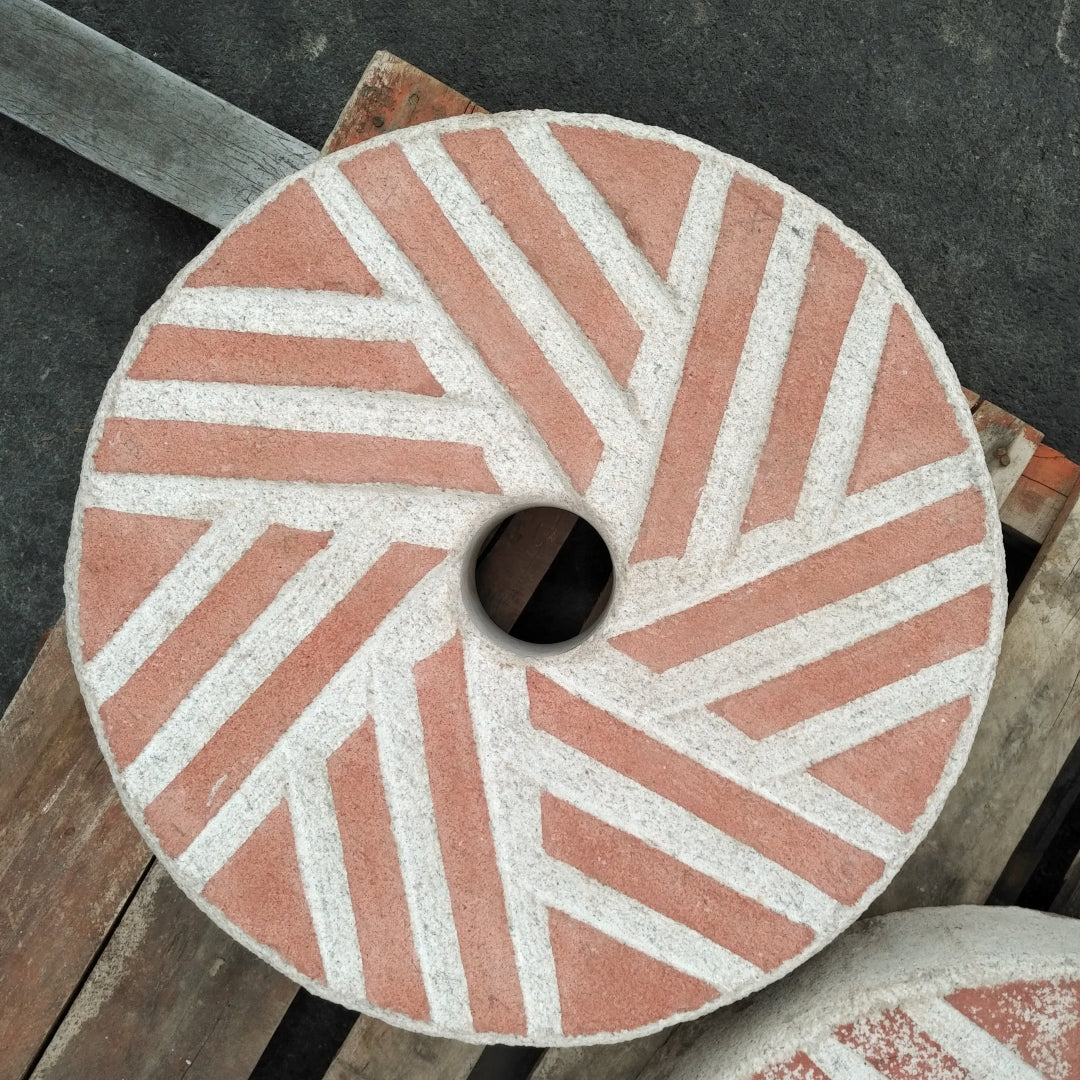Stone-milling is an ancient practice that is being revived as we learn to once again appreciate the diverse flavours and nutritional value of grains. Throughout most of history grains were ground with stone into flour, and then sifted by hand to remove bran if desired. However, in the late 1800's a new type of milling - roller milling - was introduced first in Hungary and later throughout the world. This method of milling allowed the different layers of the grain, the bran, endosperm and germ to be broken apart and separated. These three portions of the wheat berry have very different compositions. The bran contains most of the fibre, and some protein, vitamins and minerals. The endosperm is primarily starch and protein. The germ contains the majority of the vitamins, minerals and healthy oils of the grains. The germ makes up about 3% of the weight of the kernel, but this little storehouse of energy and nutrition, like the yolk of an egg, is what begins the growth of a new plant. In roller milling, after separation, the endosperm, containing primarily starch and protein, can be ground into flour low in heavy fibre and minerals and without the oils that could cause flour to go rancid during long shipping or shelf storage. This is the white flour we are familiar with today. To create a more fibre rich flour, the bran can be added back in to the white flour for a slightly healthier product without the temperamental oils of the germ. While these flours can withstand long shelf life and produce consistent, light baked goods it's at a cost.
Stone-milling does not separate the different components of the grain before grinding. Bran, endosperm and germ are ground together, and the larger pieces of bran can be sifted out later for lighter flours. The germ is completely blended into the flour and cannot be sifted out. This means that stone-ground flour contains all of the vitamins, minerals, and healthy oils that are packed into the germ and that make grains, including stone-milled flour, a valuable part of our diets. The oil-rich germ is what makes stone-milled flours have a creamy colour and rich flavour when compared with white flours.

Most roller mills also operate at higher temperatures, causing denaturing of enzymes. Stone-milling is done at low temperatures to keep the enzymes intact which, once activated by water during the fermentation process, play an important part in making certain nutrients available to our bodies. Some people find that, regardless of the type of grain, stone-milled flour is easier to digest, perhaps because of the enzymes that assist in the grain's digestion.
From a baking perspective, the flavour found in fresh stone-milled flour is incomparable to conventional flour. Added to that is the pleasing texture, particularly in whole grain flours, that will take cookies and other baked goods to another level. It's time to rediscover the flavour and nutrition of stone-milled flour!

